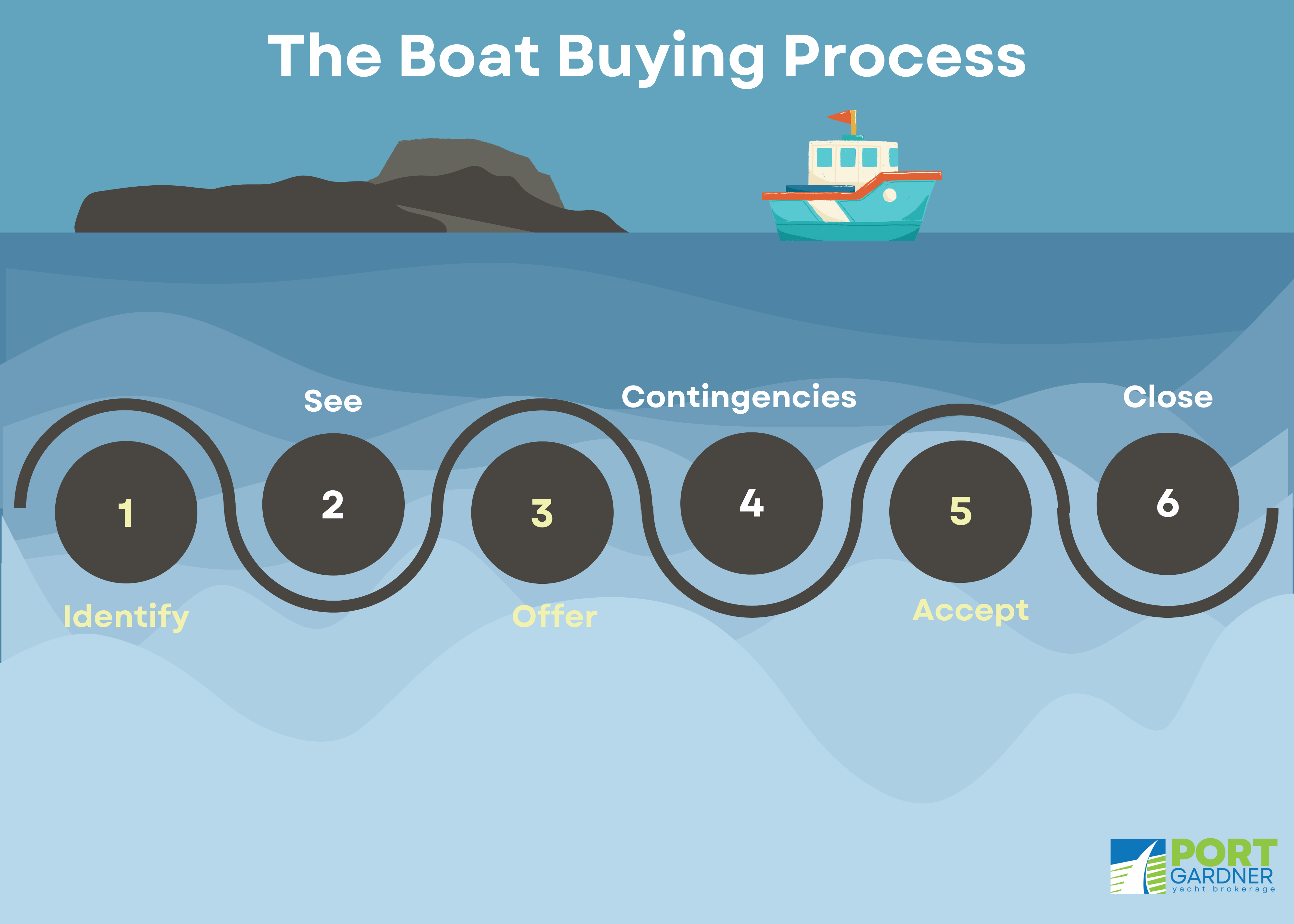
Think about how you will use a boat today, not tomorrow. What are must-have’s/non-negotiables you need to align with your use case? Use this to help narrow down your search. Once you’ve done this you will have a more targeted search, especially when applying geography, price, and condition requirements. Create a short list and remember to keep your non-negotiables in sight at all times.
So you’ve got a good search going, now it’s time to look at boats! Typically you will try to do two showings. The first is to get a good understand of the boat, it’s layout, mechanicals, sails, etc. After a showing review what you liked/didn’t like against your non-negotiable list. If interested, schedule a second showing. This is where you will go deeper. Bring a good list of either questions or items/sections of the boat that you want to review more in depth.
The next step is to put in an offer on your boat! The first step is to determine the price you want to offer. Things to consider are similar boats on the market, your geography (the PNW typically is 10-15% higher than most markets), the market, boat condition, and ideally ask a broker to get their recommendation if possible. From there you will add your contingencies. Typically contingencies are financing, marine survey (I would almost never buy a boat without one), mechanical survey, and sea trial/demonstration. These contingencies allow you to walk away from the boat without consequences if something comes up related to the contingency. Other contingencies could be additional items in the purchase, reviewing a particular item/area of concern on the boat, or the transfer of a slip. Once an offer has been accepted, you will put down a 10% deposit/earnest money that will be held in the broker’s trust account.
Now that we have the offer squared away it’s time to get to work and clear contingencies. It is during this time that you should have already narrowed in on your lenders and start getting insurance quotes. Both will require a survey to close, but it’s good to start earlier rather than later with both lenders and insurance providers. It’s time to start shopping for marine and/or mechanical surveyors. We recommend reaching out to 3-5 and shop around. Ask for information on the types of boats they typically work on, experience on boats, and look for their ability to communicate clearly with you. Most brokers will provide recommendations for various surveyors that they work with consistently. Marine surveyors will look at all of the systems on a boat, while a mechanical surveyor will exclusively look at the mechanical (i.e. engine) systems. Similarly you can also find a rigging surveyor for rigging of a sailboat as well. Surveyors typically have availability 1-3 weeks out, and then once a survey and haul out is complete, you will receive a written report soon after. It is the buyers responsibility to pay for the surveyor(s) and haul out. It is the sellers responsibility to have a captain/representative to pilot the boat for a sea trial.
After you receive your written report(s) from the surveys, you will have a better understanding of the boats condition in relation to its value. This is where, if necessary, you will renegotiate the price if any large, unexpected concerns come up via the survey. Up until this point you can walk away. Once you have decided to move forward, you will officially “accept” the vessel and its condition. This is the last stage before moving into closing, and makes you responsible for the boat, price, and ultimate condition after reviewing and clearing your contingencies.
Once the vessel is accepted you will move into closing! This is where typically a closing company will do an abstract search with the Coast Guard to determine if there are any liens or concerns regarding the existing title. They will then confirm your contact information and once all numbers have been approved by the broker, send your closing packet. This closing packet will be emailed with all items needed to transfer ownership and will need to be notorized, with originals sent back to the closing company. Once both buyer and seller closing paperwork has been signed and received, you will then wire the remaining funds (or your lender will) and the deal will officially close. Registration documents will be received in the near future, so make sure to keep copies of your closing paperwork handy if need be.
